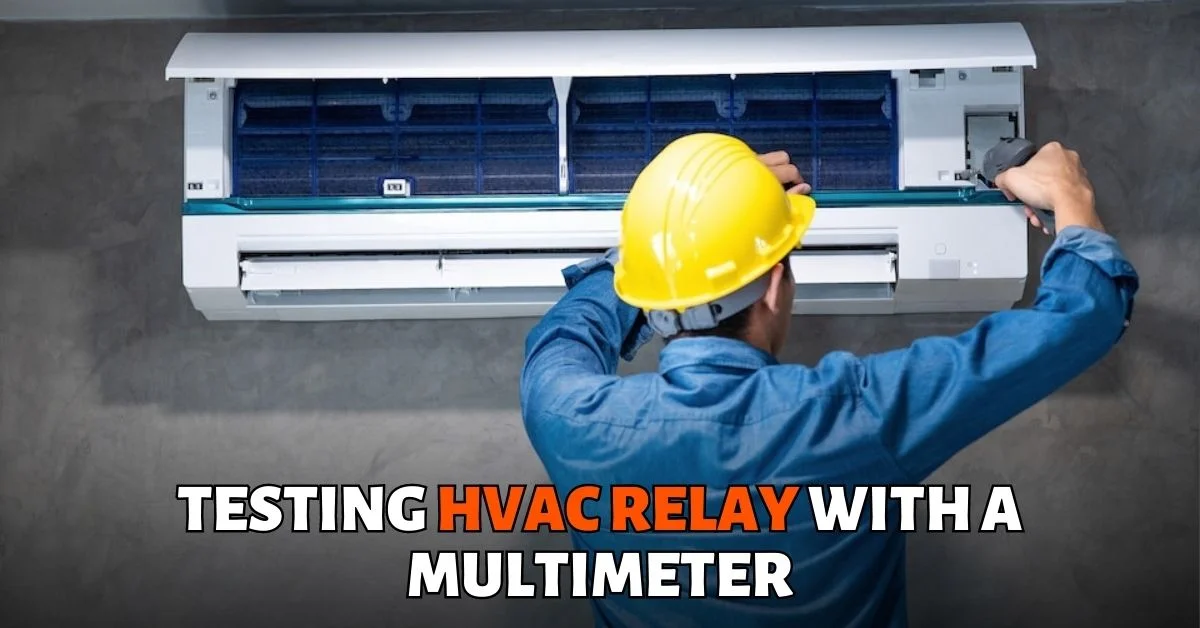An HVAC relay is an electrical component that plays a critical role in the operation of a heating, ventilation, and air conditioning (HVAC) system. It works as a switch that controls the flow of electricity to different parts of the HVAC system, such as the compressor, blower motor, and condenser fan. When the thermostat calls for heating or cooling, the relay sends a signal to activate the necessary components.
However, like all electrical components, HVAC relays can fail over time due to wear and tear, electrical surges, or other factors. When a relay fails, it can cause the HVAC system to malfunction, leading to inadequate heating or cooling, increased energy bills, or even complete system failure.
This is why it’s crucial to test the HVAC relay periodically to ensure that it’s working correctly. By testing the relay with a multimeter, you can determine if it’s functioning within its specifications and identify any potential issues before they cause more significant problems. In this article, we will provide a step-by-step guide on how to test an HVAC relay with a multimeter.
Before Starting to Test the HVAC Relay
Consult the Relay Schematic Sheet
Consult the relay schematic sheet to find out the number of pins, pin configuration, voltage rating, current rating, and other relevant information about the relay.
Conduct a Visual Inspection
Conduct a basic visual inspection to identify any visible damage, such as blackening or melting of the plastic shell that contains the contacts and coil.
Check for LED Lights
Check if the relay has LED lights that indicate its active state. If the light is not working despite having control voltage to the coil terminals, it is likely that the relay is faulty.
Disconnect Power Sources
Disconnect all power sources, including line voltage and batteries, before starting any electrical work.
Beware of Capacitors
Be mindful of capacitors in the circuit that can hold a charge even after the power source is removed.
Follow Local Laws and Regulations
Check local laws and regulations before attempting any electrical work. If you feel unsafe, seek the assistance of a professional.
Safety Precautions
Before testing an HVAC relay with a multimeter, taking some safety precautions to prevent electrical shock and injury is essential. Here are some necessary safety measures to follow:
- Turn off the power supply
- Wear safety gear (safety goggles and gloves)
- Work in a dry area
- Use the right tools
Check HVAC Relay Coil with a Multimeter
- Determine the coil requirements: Look at the manufacturer’s part number on the case and check the datasheet to determine the current and voltage requirements of the coil.
- Check for coil diode protection: Look for the control’s coil diode protection, either on the poles or the drawings.
- Study the relay configuration: Study the configuration of the relay, which is either on the case or datasheet. The device can have either one or more poles and is shown by drawing a single-line switch that connects to one pin on the relays.
- Test the contacts: Use a digital multimeter to test the disconnected condition of the contacts on the relay. Monitor the resistance between the poles and the normally open (NO) or the normally closed (NC) contacts. All the NO contacts should show an infinite reading, while NC should indicate 0 ohms.
- Stimulate the relay: Stimulate the relay with an independent voltage source according to the coil’s rating. You will hear clicking sounds if you energize the relay.
- Check the contacts: With the relay energized, use the multimeter to test the resistance between the poles and the NO and NC contacts. The NO should read 0 ohms while the NC shows infinite resistance.
Test Solid-State HVAC Relay with a Multimeter
Just to clarify, when testing a solid-state relay, the ohmmeter should be used to check the resistance across the NO terminals when the control power is not working. Once that is done, the multimeter can be used in diode-test mode to confirm the findings. The multimeter will apply a small voltage to make the semiconductor conduct, and the voltage reading should be 0.5 for a germanium transistor or 0.7 for a silicon transistor if the relay is good. If the multimeter reads OL or 0, the relay is bad.
It is important to note that solid-state relays are generally inexpensive to replace and easy to troubleshoot, but they can last longer if they are kept cool. They often come in blocking mounts or DIN rail packages. Additionally, there are special relays called SCRs (Silicon Controlled Rectifiers) that are used for precise process temperature control. These relays come in two types – for IR lamps/ovens and for heating wires. They are fast switches that turn on and off quickly and can be affected by temperature fluctuations.
Troubleshooting Common HVAC Relay Issues
I can provide some information on troubleshooting common HVAC relay issues. Here are some tips:
Inspect for physical damage
Before you start troubleshooting, check the relay for physical damage like corrosion, melted contacts, or a blown fuse. If you notice any visible damage, replace the relay.
Check the voltage supply
Make sure the voltage supply to the relay is sufficient. You can use a voltmeter to measure the voltage at the relay’s input terminals. If the voltage is too low or too high, it can cause the relay to malfunction.
Check the wiring
Ensure that the wiring is correct and properly connected. A loose or disconnected wire can cause the relay to stop working.
Check the coil
Use a multimeter to test the relay’s coil resistance. If the resistance is out of range or infinite, the coil may be faulty, and you should replace the relay.
Check the contacts
Use a multimeter to test the contacts’ continuity. If the contacts do not show continuity, it indicates that the contacts are damaged, and you need to replace the relay.
Check the control circuit
Check the control circuit to ensure that the relay is receiving the correct signal. If the signal is weak or intermittent, it can cause the relay to malfunction.
Check for overheating
If the relay is overheating, it may be due to a faulty coil or contacts. Check for signs of overheating and replace the relay if necessary.
Consult the manufacturer’s manual
If you’re not sure how to troubleshoot a particular issue, consult the manufacturer’s manual. It should provide detailed information on how to diagnose and fix common relay problems.
Conclusion
Testing an HVAC relay with a multimeter can be a simple process if you follow the appropriate steps. It’s important to have a basic understanding of the relay’s pin configuration, voltage and current requirements, and other essential information to avoid unpredictable results.
Additionally, taking necessary safety precautions, such as disconnecting power sources and checking local laws before attempting electrical work, is crucial.
With the right tools and equipment, such as a digital multimeter, you can easily test both electromagnetic and solid-state relays by checking the resistance between the poles and NO/NC contacts. By following these steps, you can troubleshoot and replace a faulty relay, saving time and money in the long run.



